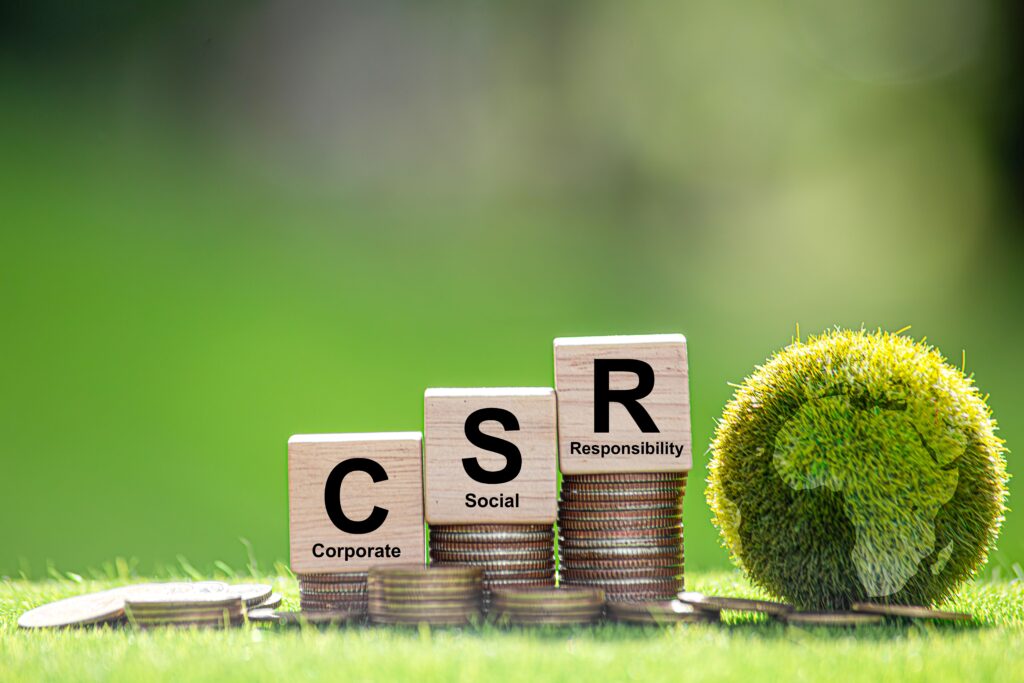By Daniel Butcher
To become a better leader, it’s crucial to clearly define what leadership actually is—and what it isn’t. In business, there’s a tendency to conflate being a leader with being a star or a boss.
That’s according to Academy of Management Scholar Sean Martin of the University of Virginia, who said that those are three very different things:
• “A star is somebody who has individually excellent talents who can show other people how great they are; they can show up and perform; they stand out in some way; they often tend to be very charismatic; and they get a lot of attention for it, often deserved attention.”
• “A boss is someone who just has power; they’re higher up than you or I might be in a hierarchy, and we think of power as being basically the opposite of dependence. People are dependent upon a boss for things like performance evaluations, raises and bonuses, extra days off, or ‘Please don’t yell at me!’ in the worst-case scenarios. So when a boss says, ‘Hey, do what I’m telling you to do,’ we’ll say, ‘Okay’ and do it because you want the things they can offer.”
• However, a leader is something very different from a star or a boss, he said. Leaders use their influence for getting things done for the long-term benefit of the organization, not to get plaudits or exert authority to feel powerful. Leadership is about earning respect from peers and direct reports, not demanding it.
“Influence is more about getting people to do what they don’t necessarily have to do and otherwise might not do, but they’re doing it for you because you’ve built the kind of relationships, set up the kind of workplace, and created the kind of context for open communication so that people feel like they can come to you,” Martin said.
“If people feel like you care about them, when you ask them to do something, whether you’re their boss or not, they’re going to say, ‘Okay, well, I’m going to do what they’re asking, because it’s them who’s asking, not because they have something that I must get,’” he said. “You can do leadership from any level of an organization.”
-
Daniel Butcher is a writer and the Managing Editor of AOM Today at the Academy of Management (AOM). Previously, he was a writer and the Finance Editor for Strategic Finance magazine and Management Accounting Quarterly, a scholarly journal, at the Institute of Management Accountants (IMA). Prior to that, he worked as a writer/editor at The Financial Times, including daily FT sister publications Ignites and FundFire, Crain Communications’s InvestmentNews and Crain’s Wealth, eFinancialCareers, and Arizent’s Financial Planning, Re:Invent|Wealth, On Wall Street, Bank Investment Consultant, and Money Management Executive. He earned his bachelor’s degree from the University of Colorado Boulder and his master’s degree from New York University. You can reach him at dbutcher@aom.org or via LinkedIn.
View all posts
Up next....
Pay Transparency Can Push Reward Inequities Under the Table
By Daniel Butcher
Performance-based pay—including merit-based salary increases and bonuses—can be complicated by pay transparency rules that make the details known to coworkers, according to Academy of Management Scholar Peter Bamberger of Tel Aviv University.
A reaction to that can lead to pay compression—when wages for low-skilled or low-performing workers and wages for high-skilled or high-performing workers move closer together—or an increase in requests for deals with special perks, also called idiosyncratic deals or i-deals. I-deals are non-standard work arrangements that individual employees negotiate to get remote work or flexibility, training opportunities, special assignments, and even performance benchmarks that would trigger bonuses. I-deals are often used to reward high-performing candidates and employees who have specialized skills in the hopes of retaining them long-term.
“You can imagine, if you’re a star performer and your bonus or merit-based raise is lower than it’s been before, you’re likely to think about leaving that organization and going to work somewhere else—and that’s exactly what some economists have found, that where we have pay compression, the star performers actually pick up and leave,” Bamberger said. “I recently published a paper that also shows the same thing, that pay compression very quickly leads to star performers’ departure.”
So what can organizations’ leaders do?
“What we find is that employees don’t necessarily push for more money; they make their requests for other types of rewards, primarily benefits as part of what we call idiosyncratic deals, things like the number of days per week that they can work from home or the number of weeks per year that they can work from Hawaii,” Bamberger said. “There’s a large body of literature on i-deals in management, and they include various types of benefits packages.
“What we find using data from about 120 organizations in China is that where pay is more transparent, the differentials in the pay of higher and lower performers are more compressed,” he said. “Perhaps because such a situation could drive higher performers to look for alternative employment, when pay was more transparent, employers rewarded the higher performers in other, less observable ways using these idiosyncratic deals. If fact, higher performers asked for these types of deals, and in 50% of cases where they ask for it, they got it.
“What’s actually happening is that transparency is shifting the pay differential from where it can be seen, annual raises and bonuses, to those types of rewards where it’s not transparent, that is, idiosyncratic deals.”
-
Daniel Butcher is a writer and the Managing Editor of AOM Today at the Academy of Management (AOM). Previously, he was a writer and the Finance Editor for Strategic Finance magazine and Management Accounting Quarterly, a scholarly journal, at the Institute of Management Accountants (IMA). Prior to that, he worked as a writer/editor at The Financial Times, including daily FT sister publications Ignites and FundFire, Crain Communications’s InvestmentNews and Crain’s Wealth, eFinancialCareers, and Arizent’s Financial Planning, Re:Invent|Wealth, On Wall Street, Bank Investment Consultant, and Money Management Executive. He earned his bachelor’s degree from the University of Colorado Boulder and his master’s degree from New York University. You can reach him at dbutcher@aom.org or via LinkedIn.
View all posts
Up next....
Two Factors that Determine Young Professionals’ Drinking Levels
By Daniel Butcher
Early-career professionals often drink as much alcohol as they did in college or even more after graduation, especially if they’re working in a sales role with a boss or mentor who drinks a lot, research shows. But young workers in roles that make them feel empowered and who are surrounded by supportive coworkers who tend to drink alcohol in moderation are more likely to deal with socialization and stress in healthy ways and avoid problem drinking.
That’s according to Academy of Management Scholar Peter Bamberger of Tel Aviv University, who said supportive peer relationships with abstainers or moderate drinkers can be influential, as can jobs that provide a higher level of psychological empowerment.
“A combination of the two—peer support and empowerment—make it so that people aren’t as stressed out by being given roles and tasks that they may not be able to handle, because underlying a lot of what’s involved with this drinking are two main motivations,” Bamberger said. “One is a normative social motivation to go out and drink to become socially integrated in their workplace.
“The second is a stress motivation: ‘This is how I coped with stress in college; I went out to drink, and now I do the same thing at work,’” he said. “One of the critical things that we show in our research studies is that if managers can find alternative ways of coping with stress, actually being proactive in terms of trying to address some of the stressors that newcomers face at work, like uncertainty, they may be able to speed up that maturing out process that can lead to reduced levels of alcohol consumption among early-career professionals.
“Support from peers and psychological empowerment were keys to success in that.”
-
Daniel Butcher is a writer and the Managing Editor of AOM Today at the Academy of Management (AOM). Previously, he was a writer and the Finance Editor for Strategic Finance magazine and Management Accounting Quarterly, a scholarly journal, at the Institute of Management Accountants (IMA). Prior to that, he worked as a writer/editor at The Financial Times, including daily FT sister publications Ignites and FundFire, Crain Communications’s InvestmentNews and Crain’s Wealth, eFinancialCareers, and Arizent’s Financial Planning, Re:Invent|Wealth, On Wall Street, Bank Investment Consultant, and Money Management Executive. He earned his bachelor’s degree from the University of Colorado Boulder and his master’s degree from New York University. You can reach him at dbutcher@aom.org or via LinkedIn.
View all posts
Up next....
Binge Drinking Decreases After College, Right? Not So Fast…
By Daniel Butcher
Contrary to popular belief, university students don’t get drinking out of their systems during their college years before entering the workforce. Studies show drinking levels increase after graduation and peak in the mid-20s.
Academy of Management Scholar Peter Bamberger of Tel Aviv University said that especially for some client-facing roles such as sales, on-the-job pressures and social situations often lead to increased alcohol consumption among young professionals.
“The common perception is that people’s drinking is at its highest levels for young adults, at least when they’re in college, and then as soon as they get out of college, they take on employment; they start their career, and their drinking very quickly declines,” Bamberger said. “However, there’s been some indication already for the past 10 years that that may not be the case.
“In fact, the data on young adults shows that, particularly among college students and twenty-somethings, the peak levels of alcohol use and misuse are actually at around ages 25 and 26, and they’re continuously rising after graduation,” he said. “It’s not like people graduate from college and mature out of their drinking—the party continues.”
Bamberger and colleagues have studied different profiles of alcohol drinkers. Their research findings don’t always align with popular narratives about booze consumption.
“We’ve looked at how people drink alcoholic beverages, how frequently and when they drink, and there are certain patterns that are more problematic than others,” Bamberger said. “First of all, where individuals engage in heavy episodic drinking, like binge drinking, and they do it more frequently, and they do it not necessarily only on a weekend but during the week as well, that’s a very risky pattern.
“And then you have more in the middle of the range, moderate traits and patterns, and then you have patterns like only drinking socially or only on special occasions, and you have abstainers, but and most college students do drink—most are not abstainers,” he said.
“We have these three patterns among people who drink, and when we look at the likelihood of people shifting from a really risky pattern of heavy drinking to a more moderate pattern, or from a moderate pattern to light drinking, what we find is that these patterns are in fact rather sticky.”
-
Daniel Butcher is a writer and the Managing Editor of AOM Today at the Academy of Management (AOM). Previously, he was a writer and the Finance Editor for Strategic Finance magazine and Management Accounting Quarterly, a scholarly journal, at the Institute of Management Accountants (IMA). Prior to that, he worked as a writer/editor at The Financial Times, including daily FT sister publications Ignites and FundFire, Crain Communications’s InvestmentNews and Crain’s Wealth, eFinancialCareers, and Arizent’s Financial Planning, Re:Invent|Wealth, On Wall Street, Bank Investment Consultant, and Money Management Executive. He earned his bachelor’s degree from the University of Colorado Boulder and his master’s degree from New York University. You can reach him at dbutcher@aom.org or via LinkedIn.
View all posts
Up next....
Young Heavy Drinkers in Non-STEM Jobs Earn More Money
By Daniel Butcher
There is no meaningful correlation between levels of alcohol consumption and compensation among early-career professionals working in roles focused on science, technology, engineering, and mathematics (STEM). But heavy drinking is associated with higher pay for non-STEM professionals who are recent college graduates.
Academy of Management Scholar Peter Bamberger of Tel Aviv University said that he and colleagues have researched levels of alcohol consumption and compensation of STEM professionals versus those working in non-STEM fields.
“We were looking at the link between consumption patterns and income growth in the initial years of employment after graduating from college, and surprisingly, what we found is a positive relationship between drinking and income growth in non-STEM roles,” Bamberger said.
“The findings are actually capturing the dynamic that, if you’re not in a STEM job and you want to move up in the organization, you need to engage in these social practices that often revolve around alcohol, and the more you do that, the higher your growth in income is going to be,” he said.
That finding is—at least in part—tied to the prevalence of non-STEM professionals working in sales, marketing, distribution, customer-service, and business-development roles who routinely partake in adult beverages while meeting with clients and prospects.
“A lot of non-STEM people are engaging in marketing and sales and support in building and maintaining relationships with customers,” Bamberger said. “In STEM roles, they’re working in a lab or in front of a computer terminal coding, so there’s less of a role for alcohol as a basis for increasing your salary—drinking is not going to do a hell of a lot for your career if your role isn’t client-facing, right?
“But early-career non-STEM salespeople who drink on the job with clients may be more likely to get promoted and rewarded financially,” he said. “That was the logic behind the research, and that’s what we actually found.”
However, there’s an obvious caveat. Bamberger noted that recent research shows that daily alcohol intake—even in moderate amounts—increases drinkers’ risk of health issues.
“There have been a couple of studies that have come out recently that that directly contradict the line that’s been pushed a lot by a lot of the alcoholic-beverages companies, which is that having some wine with your meal every day is going to prolong your life—it’s healthy,” Bamberger said.
“You’re best off not drinking any alcohol whatsoever, not so much because of its implications on mental health, but rather largely because of its implications with respect to alcohol as a carcinogen, specifically as a leading cause of esophageal cancer,” he said.
“Many younger employees nowadays recognize the risks in drinking; a lot of young people are actually picking up on those problematic implications of drinking alcohol even at the lowest levels and understanding that health risk.”
-
Daniel Butcher is a writer and the Managing Editor of AOM Today at the Academy of Management (AOM). Previously, he was a writer and the Finance Editor for Strategic Finance magazine and Management Accounting Quarterly, a scholarly journal, at the Institute of Management Accountants (IMA). Prior to that, he worked as a writer/editor at The Financial Times, including daily FT sister publications Ignites and FundFire, Crain Communications’s InvestmentNews and Crain’s Wealth, eFinancialCareers, and Arizent’s Financial Planning, Re:Invent|Wealth, On Wall Street, Bank Investment Consultant, and Money Management Executive. He earned his bachelor’s degree from the University of Colorado Boulder and his master’s degree from New York University. You can reach him at dbutcher@aom.org or via LinkedIn.
View all posts
Up next....
Sharing Info, Workloads, Positive Feeback Boosts Productivity
By Daniel Butcher
Leaders who can install processes for effective, timely information-sharing, fair workload distribution, and civil communication—including positive feedback—foster the best collaboration and productivity among team members.
Academy of Management Scholar Peter Bamberger of Tel Aviv University said that lackluster productivity is often a result of poor information-sharing and workload-sharing behaviors.
“Team processes are hard; people can’t always pick up the signals that they need to,” Bamberger said. “For example, if they have a piece of information that someone else needs, when should they pass it on to this other person? A nurse has a test result; when should she pass it on to the to the team leader or attending physician?
“If she passes it on too early, she’s going to disrupt what they’re doing, which clearly affects their performance, but if she passes it on too late, it could be deadly, so timing and synchrony of such tasks are crucial,” he said.
Incivility and rudeness also undermine productivity, while civility and kindness tend to boost it.
“In research on medical teams, we demonstrated that when people experience gratitude at work it can often, but not always, have beneficial implications,” Bamberger said. “A lot depends on the source of the gratitude and the nature of the task at hand.
“In one experiment, we had the three teams: a control condition, one that viewed a video before they started the day from a senior neonatologist talking about how grateful he is to everybody in the field for doing the wonderful work they do to save these babies, which had nothing in terms of a productivity boost, but then we had a third group where we had a mother of a preemie talk about how grateful she was to the medical team that saved her child, and that had massive positive effects,” he said.
“We demonstrate what that does to the team interaction through the implications based on a theory in cognitive science called [Fredrickson’s]broaden-and-build, which explains how positive emotions have beneficial effects on people’s ability to be flexible in their thinking, to absorb more information, and things like that.”
Bamberger and colleagues also demonstrate that the effects were much stronger when a mother expressed gratitude than when a senior colleague did.
Sharing positive customer feedback
Business leaders and managers can leverage these insights to improve their effectiveness.
“They can demonstrate gratitude themselves; it does make intuitive sense that if managers and leaders behave with civility and politeness, then that may set an example for the rank-and-file employees to do the same, but they can encourage customers and clients or patients to say ‘thank you’ directly,” Bamberger said. “If you like the way a flight attendant treated you on a flight, you’re supposed to write the company, but what if you were actually put in direct contact with the flight attendant and were able to express the gratitude directly?
“Our evidence suggests that that’s going to have a much stronger effect than a manager saying, ‘You got three positive letters this week,’” he said. “Setting up systems for customers to directly express positive feedback has the potential to significantly boost employee morale and performance.”
-
Daniel Butcher is a writer and the Managing Editor of AOM Today at the Academy of Management (AOM). Previously, he was a writer and the Finance Editor for Strategic Finance magazine and Management Accounting Quarterly, a scholarly journal, at the Institute of Management Accountants (IMA). Prior to that, he worked as a writer/editor at The Financial Times, including daily FT sister publications Ignites and FundFire, Crain Communications’s InvestmentNews and Crain’s Wealth, eFinancialCareers, and Arizent’s Financial Planning, Re:Invent|Wealth, On Wall Street, Bank Investment Consultant, and Money Management Executive. He earned his bachelor’s degree from the University of Colorado Boulder and his master’s degree from New York University. You can reach him at dbutcher@aom.org or via LinkedIn.
View all posts
Up next....
Rudeness Doesn’t Motivate Workers—Quite the Opposite
By Daniel Butcher
Some business leaders and managers resort to barbs or even shouting to motivate staff members, but research shows that a coercive leadership style is counterproductive. In fact, civility leads to improved team cohesion and performance, while rudeness hurts workers’ performance.
Academy of Management Scholar Peter Bamberger of Tel Aviv University said that several research papers on the subject explore the implications that emotion-laden events in organizations have on interpersonal relations and team dynamics. In a nutshell, rudeness creates a huge distraction that undermines productivity.
“For example, why can’t you text and drive at the same time? When you’re driving, the reason you don’t text is because—aside from it being against the law—you’re distracted,” Bamberger said. “It’s a complex process to text—it takes your attention, so you have limited cognitive resources, and driving is also complex.
“Whatever goes to the texting is not available for driving, and the result could be death,” he said.
What’s the connection between texting while driving and leadership style, as well as interactions between coworkers? Rudeness and even mild incivility are actually highly emotional events that occur frequently in the workplace.
“Many, many employees experience rudeness at work, and it’s rather ambiguous,” Bamberger said. “It’s not like being bullied or attacked physically, but in response to rudeness, you’ve got to try to figure out what is threatening to some degree, but you don’t know how threatening it is.
“And precisely because of that, and largely unconsciously, your brain is engaging and trying to determine the degree of threat,” he said. “That’s not a mindset that’s conducive to analysis, attention to detail, or any type of thought-demanding work.”
-
Daniel Butcher is a writer and the Managing Editor of AOM Today at the Academy of Management (AOM). Previously, he was a writer and the Finance Editor for Strategic Finance magazine and Management Accounting Quarterly, a scholarly journal, at the Institute of Management Accountants (IMA). Prior to that, he worked as a writer/editor at The Financial Times, including daily FT sister publications Ignites and FundFire, Crain Communications’s InvestmentNews and Crain’s Wealth, eFinancialCareers, and Arizent’s Financial Planning, Re:Invent|Wealth, On Wall Street, Bank Investment Consultant, and Money Management Executive. He earned his bachelor’s degree from the University of Colorado Boulder and his master’s degree from New York University. You can reach him at dbutcher@aom.org or via LinkedIn.
View all posts
Up next....
If You Do Employee Surveys, Listen to Respondents
By Daniel Butcher
Conducting regular employee surveys is a best practice that leads to better engagement, morale, retention, and productivity. But it isn’t enough to simply collect responses, according to Academy of Management Scholar Quinetta Roberson of Michigan State University. It’s important for leaders to actually listen to respondents’ thoughts and feelings and take action to correct problems.
Roberson said that she was working with a large organization as a diversity consultant to develop a strategic plan and objectives. A key step was to collect feedback from its employees, some of whom were ringing alarm bells.
“In their employee survey, they had people who were talking about interpersonal incidents with their coworkers, and they felt bullied and harassed,” Roberson said. “Particularly members of certain groups didn’t feel a sense of belonging and would project that they only had a year left in the organization.
“And so I said, ‘That is really bad; we’ve got to address this … let’s talk about how to address this problem that people say they felt bullied and harassed,’” she said. “I didn’t say this as my own personal opinion; I was literally looking at the responses to their employee survey.
“And they said, ‘We don’t want to say that because it might make other people feel like they are harassed or bullied, and so their whole communication approach was to say, ‘We’ve got some good stuff going on, but we don’t want to talk about the bad stuff.”
While focusing on the positive is an understandable impulse, by not prioritizing the negatives, leaders and managers miss opportunities to make improvements that boost employee engagement, morale, retention, and productivity.
“It isn’t easy work to do, but if you put in the time and the investment, it also isn’t rocket science, so people have to be willing to do the work and get into the stickiness of it,” Roberson said.
“That’s the kind of conversations that I have, because if they’re not willing to do that hard work of thinking about ‘What do we do to fix our problems? What should our goals be? How do we want to be better? How could we be better? And how could we measure that?’ then I’m not the person to work with them, because that’s where I do my work at that strategic level,” she said.
“And that’s just a personal thing from my research and my background where I say, ‘If we don’t have those conversations about formulating strategy, developing dashboards, and creating processes to drive change, then we’re not going to get anywhere; we’re just putting a band-aid on stuff.’”
-
Daniel Butcher is a writer and the Managing Editor of AOM Today at the Academy of Management (AOM). Previously, he was a writer and the Finance Editor for Strategic Finance magazine and Management Accounting Quarterly, a scholarly journal, at the Institute of Management Accountants (IMA). Prior to that, he worked as a writer/editor at The Financial Times, including daily FT sister publications Ignites and FundFire, Crain Communications’s InvestmentNews and Crain’s Wealth, eFinancialCareers, and Arizent’s Financial Planning, Re:Invent|Wealth, On Wall Street, Bank Investment Consultant, and Money Management Executive. He earned his bachelor’s degree from the University of Colorado Boulder and his master’s degree from New York University. You can reach him at dbutcher@aom.org or via LinkedIn.
View all posts
Up next....
The Evolution of Corporate Social Responsibility
By Daniel Butcher
Academy of Management Scholar Herman Aguinis of the George Washington University School of Business, one of the most influential management professors and researchers, said corporate social responsibility (CSR) is about three Ps—profit, the planet, and people—the “triple bottom line.” The following is an overview of how CSR has evolved, reflecting changing societal expectations and business practices:
-
Daniel Butcher is a writer and the Managing Editor of AOM Today at the Academy of Management (AOM). Previously, he was a writer and the Finance Editor for Strategic Finance magazine and Management Accounting Quarterly, a scholarly journal, at the Institute of Management Accountants (IMA). Prior to that, he worked as a writer/editor at The Financial Times, including daily FT sister publications Ignites and FundFire, Crain Communications’s InvestmentNews and Crain’s Wealth, eFinancialCareers, and Arizent’s Financial Planning, Re:Invent|Wealth, On Wall Street, Bank Investment Consultant, and Money Management Executive. He earned his bachelor’s degree from the University of Colorado Boulder and his master’s degree from New York University. You can reach him at dbutcher@aom.org or via LinkedIn.
View all posts
Up next....
Tips for Managers to Avoid Team Burnout
By Daniel Butcher
Managers should be on the lookout for signs of burnout in their team members, and a sudden decline in work performance, missed deadlines, or increased errors could be an indication that an employee needs help. Burnout leads to reduced productivity and increased turnover, which is expensive for organizations and causes headaches for managers.
Academy of Management Scholar Sean Martin of the University of Virginia said there’s evidence that many people’s views of the workplace are pretty bleak right now.
“I saw some statistics indicating a lot of folks are feeling a high level of burnout—two-thirds of people would rather get a new boss than a pay raise; they’re just tired of dealing with their boss,” Martin said. “I recently saw another poll that said more than half of people would trust a stranger more than their boss.”
Worker stress has remained at record high levels since the pandemic, with 52% of employees in the U.S. and Canada reporting that they experienced a significant amount of stress on the previous day, according to Gallup. Managers who want to help avoid or mitigate burnout on their team need to realize that people are dealing with stressors both in and out of work and, in response, demonstrate flexibility and empathy.
“There’s a lot of things that are going on in someone’s life like managing family dynamics, extracurriculars, maybe they have care duties for young kids or older parents, so burnout is likely to be present in some form on your team,” Martin said. “If that’s the case, recognize that it’s not always just because of what’s going on at work, although it certainly could be.
“We could either be the kinds of leaders who say, ‘I don’t care—this is work—check all of that stuff at the door and do your job, ’or we could say, ‘I want to deal with a whole person and be the kind of leader that, when people are finished working with me, they view their time with me as time well spent and believe that I had a positive impact on their life and their career,’” he said.
“If you want to be that, then you have to recognize that burnout is an ever-present threat, and when you see people starting to experience it and start seeing the telltale signs of stress, such as retreating into oneself and performance issues in terms of objective measurables, be willing to ask, ‘What can I do? How can I help? ’to start mitigating the burnout that people can feel.”
-
Daniel Butcher is a writer and the Managing Editor of AOM Today at the Academy of Management (AOM). Previously, he was a writer and the Finance Editor for Strategic Finance magazine and Management Accounting Quarterly, a scholarly journal, at the Institute of Management Accountants (IMA). Prior to that, he worked as a writer/editor at The Financial Times, including daily FT sister publications Ignites and FundFire, Crain Communications’s InvestmentNews and Crain’s Wealth, eFinancialCareers, and Arizent’s Financial Planning, Re:Invent|Wealth, On Wall Street, Bank Investment Consultant, and Money Management Executive. He earned his bachelor’s degree from the University of Colorado Boulder and his master’s degree from New York University. You can reach him at dbutcher@aom.org or via LinkedIn.
View all posts
Up next....
Can Performance Be Managed Upward?
By Daniel Butcher
Employees evaluating managers’ performance, not just vice versa, also can benefit organizations.
That’s according to Academy of Management Scholar Herman Aguinis of at the George Washington University School of Business and author of Performance Management for Dummies, who cited Dell Inc., where everyone—from entry-level employees to the top management team—completes an annual employee engagement survey called “Tell Dell” with questions about performance and diversity, equity, and inclusion (DEI). Dell leaders use the survey data to hold personnel—including leaders—accountable.
“Before they get promoted upward, every Dell manager needs to have really good ratings from their subordinates or direct reports, so it’s not just the supervisor evaluating the performance of their employees, but also the employees evaluating the performance of leadership and their supervisors—it goes both ways, upward and downward,” Aguinis said.
An even more extreme experiment in a new way to do performance management is “radical transparency,” which Ray Dalio, founder of hedge fund giant Bridgewater Associates, initiated more than three decades ago. He’d been looking for ways to improve the company’s performance and establish a culture of openness and independent thought. The organization has encouraged employees to review their direct manager or supervisor and even senior executives honestly, even harshly—real-time performance evaluations often deliver “radical truth.”
While Dalio found success with this approach, it’s not for everyone, as it can ruffle feathers and make people uncomfortable. Radical transparency means that leaders—and everyone else at the company—open themselves up to oversight and critiques. They must have thick skin and open minds to listen with humility to the feedback that lower-ranking employees give them and respond to it in ways that are productive, without getting defensive or seeking retribution. They also have to deliver brutally honest feedback to their direct reports in ways that improve their performance and morale rather than discouraging them.
-
Daniel Butcher is a writer and the Managing Editor of AOM Today at the Academy of Management (AOM). Previously, he was a writer and the Finance Editor for Strategic Finance magazine and Management Accounting Quarterly, a scholarly journal, at the Institute of Management Accountants (IMA). Prior to that, he worked as a writer/editor at The Financial Times, including daily FT sister publications Ignites and FundFire, Crain Communications’s InvestmentNews and Crain’s Wealth, eFinancialCareers, and Arizent’s Financial Planning, Re:Invent|Wealth, On Wall Street, Bank Investment Consultant, and Money Management Executive. He earned his bachelor’s degree from the University of Colorado Boulder and his master’s degree from New York University. You can reach him at dbutcher@aom.org or via LinkedIn.
View all posts

















